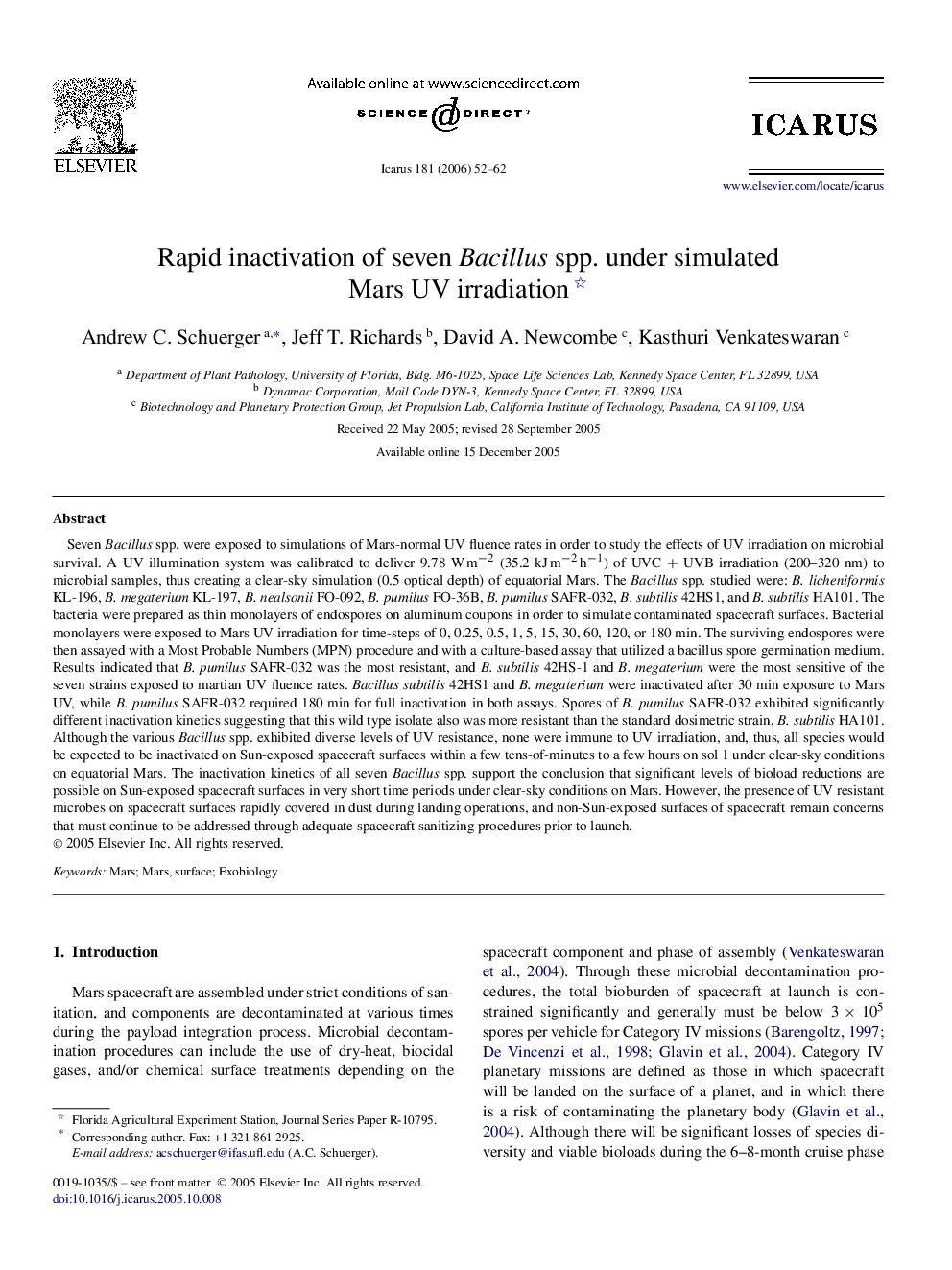| کد مقاله | کد نشریه | سال انتشار | مقاله انگلیسی | نسخه تمام متن |
|---|---|---|---|---|
| 1775878 | 1021210 | 2006 | 11 صفحه PDF | دانلود رایگان |

Seven Bacillus spp. were exposed to simulations of Mars-normal UV fluence rates in order to study the effects of UV irradiation on microbial survival. A UV illumination system was calibrated to deliver 9.78 W m−2 (35.2 kJ m−2 h−1) of UVC + UVB irradiation (200–320 nm) to microbial samples, thus creating a clear-sky simulation (0.5 optical depth) of equatorial Mars. The Bacillus spp. studied were: B. licheniformis KL-196, B. megaterium KL-197, B. nealsonii FO-092, B. pumilus FO-36B, B. pumilus SAFR-032, B. subtilis 42HS1, and B. subtilis HA101. The bacteria were prepared as thin monolayers of endospores on aluminum coupons in order to simulate contaminated spacecraft surfaces. Bacterial monolayers were exposed to Mars UV irradiation for time-steps of 0, 0.25, 0.5, 1, 5, 15, 30, 60, 120, or 180 min. The surviving endospores were then assayed with a Most Probable Numbers (MPN) procedure and with a culture-based assay that utilized a bacillus spore germination medium. Results indicated that B. pumilus SAFR-032 was the most resistant, and B. subtilis 42HS-1 and B. megaterium were the most sensitive of the seven strains exposed to martian UV fluence rates. Bacillus subtilis 42HS1 and B. megaterium were inactivated after 30 min exposure to Mars UV, while B. pumilus SAFR-032 required 180 min for full inactivation in both assays. Spores of B. pumilus SAFR-032 exhibited significantly different inactivation kinetics suggesting that this wild type isolate also was more resistant than the standard dosimetric strain, B. subtilis HA101. Although the various Bacillus spp. exhibited diverse levels of UV resistance, none were immune to UV irradiation, and, thus, all species would be expected to be inactivated on Sun-exposed spacecraft surfaces within a few tens-of-minutes to a few hours on sol 1 under clear-sky conditions on equatorial Mars. The inactivation kinetics of all seven Bacillus spp. support the conclusion that significant levels of bioload reductions are possible on Sun-exposed spacecraft surfaces in very short time periods under clear-sky conditions on Mars. However, the presence of UV resistant microbes on spacecraft surfaces rapidly covered in dust during landing operations, and non-Sun-exposed surfaces of spacecraft remain concerns that must continue to be addressed through adequate spacecraft sanitizing procedures prior to launch.
Journal: Icarus - Volume 181, Issue 1, March 2006, Pages 52–62